Horse riders if you like to travel, include Portugal in your horse riding holiday plans. Besides the breath-taking landscapes you can enjoy in safety, you will find nice, welcoming people who will make your trip unforgettable. For a small country, Portugal has a diversity of landscapes that lie within a short distance of each other, so that your stay will never be monotonous. You will be able to travel between mountain landscapes and beaches, or from peaceful plains extending as far as the eye can see to the bustle of the cities in a short space of time, meaning that you can make the best use of your time here.
All of this without the need to be overly concerned about your safety, seeing that in 2017 Portugal was considered the 3rd most peaceful country in the world, according to the Global Peace Index. If you don’t know Portuguese and you need directions, be assured that there won’t be a problem, seeing that most Portuguese speak English and even other languages. But if you can’t find anyone who speaks a foreign language, you can be sure that help will come, even if it’s by mime and gestures…the Portuguese always try their best to help any foreigner in a difficult situation. And if you’re accustomed to using technology to find the information you need, you won’t have any problems either, because there is good network coverage throughout the country, with many zones of free Wi-fi.
Things to do and See
Lisbon
As you will be arriving and departing from Lisbon – this is the ideal holiday to build in a bit of extra time to get to know the city. Lisbon has the distinction of being one of Europe’s cheapest capital cities, and this combined with the fact it is rapidly becoming a foodie heaven, with multiple Michellin starred restaurants.
- Mosteiro dos Jerónimos This imperious 15th-century Manueline monastery was built to commemorate Vasco da Gama's 'discovery' of India. The main attraction is the delicate Gothic chapel that opens up on to a grand monastery, in which some of Portugal's greatest historical figures are entombed. Praça do Império tel: 00 351 21 362 0034
- Castelo São Jorge - The winding medieval streets of Lisbon's most ancient neighbourhood, Alfama, twist up to the city's Moorish pinnacle. The dusk-orange walls of the ancient castle date back to the ninth century and lord over the city, being visible from almost every street. Castelo tel: 00 351 21 880 0620
- Tram 28 - The most charming way to tick off a few sights, the wooden tram 28 rumbles through Lisbon's prettiest and most historic streets. Starting at the foot of Bairro Alto, the vintage carriage trundles through the shopping districts of Baixa and Chiado before lurching and labouring past the churches and castles on the cobbled hills of the Alfama and Graça neighbourhoods. Departs from Praca Luis de Camões to Graça every 15 minutes
- Torre de Belém - A symbol of maritime Lisbon, this Byzantine and Gothic tower stands out over the mouth of the Tejo, guarding the entrance to the city's harbour. Reached via a walkway raised out of the water on timbers, the tower is filled with intricate stonework and has wide Atlantic views. Praça da Torre de São Vicente de Belém tel: 00 351 21 362 0034
- Museu Gulbenkian - One of the 20th century's great philanthropists, Armenian Calouste Gulbenkian, left much of his art and historic artefacts to his favoured city, Lisbon. The museum set up in his honour now houses one of Europe's most epic collections. Look out for priceless Hellenic vases, ancient Chinese porcelain and paintings by Rembrandt, Monet and Van Dyck. There's also an affiliated modern art museum opposite. Avenida de Berna 45A tel: 00 351 21 782 3461
- Sintra - The aristocratic hill town to the west of the city is a Neverland of fairytale palaces, manicured floral gardens and wild woodlands. The train to Sintra departs from Rossio station every 20 minutes, takes about 40 minutes.
Constância
- Constância is a beautiful village situated in the Central region if the Country, by the wonderful Tejo and Zêzere rivers, forming a kind of Peninsula. This village is also called as “Poem Village” because here lived the one that is considered to be the greatest Portuguese Poet: Luís de Camões (1524 or 1525 - 1580).
- Almourol Castle, Castelo de Almourol - Regarded as Portugal’s most beautiful castle! Situated on a small cliffy island in the middle of the Tagus River, Almourol Castle is one of the most significant military Medieval monuments, which best evokes the memory of the Knights Templar in Portugal.
Golegã
The equine town of Golegã boasts of being the horse capital of Portugal! For the rest of the year, their presence is felt with wrought-iron statues. For ten days every November it holds a festival dedicated to the worship of the Lusitano horse. There are horses everywhere: parading round the central square; trotting up and down the streets until five in the morning when the manure-cleaners move in; lined up outside makeshift bars; even going into discotheques in the small hours of the morning, seemingly unphased by the strobe lights. For the rest of the year, Golegã is a sleepy place, although its love affair with the horse is always evident. As you enter the town, the main roundabout is decorated with the brands of local studs, and there are wrought-iron statues of horses and riders everywhere. The main square, which is about the size of a cricket pitch, is laid out with a sand area in the middle to practise dressage, and a track round the outside where riders and drivers of horse-drawn vehicles can exercise their horses.
Lusitano horses
About the size of a police horse, but they are much more elegant and athletic. They have arched necks, powerful muscles and a naturally high gait. Like their Andalusian cousins, they are descendants of the horses brought over when the Iberian Peninsula was occupied by the Arabs. And they still look like warhorses. Here at our horse riding holiday centre you will have the chane to ride these beautiful horses and experience the ride for yourself on well schooled horses.
Weather
What's the best time to go to Constância in Portugal? Here are some annual weather facts collected from historical climate data:
During the months of July and August you are most likely to experience good weather with pleasant average temperatures. The average annual maximum temperature is: 53.6° Fahrenheit (12.0° Celsius), the average annual minimum winter temperature is: 41° Fahrenheit (5.0° Celsius). A lot of rain (rainy season) falls in the months of: January, February, October, November and December. December is the wettest month. This month should be avoided if you don't like too much rain. On average, the warmest month is July, August is the driest month. And coolest – December.
Where to Eat
Once at the riding centre your host will plan every meal and take you out to a variety of local restaurants for dinner. This half board package means you only have to buy your lunch. At lunchtime he will choose local eateries with a budget below €15.
How to get there
A good network of public transport serves this area of Portugal.
By Air
Flights direct to Lisbon fly from London, Manchester, Birmingham, Bristol and Edinburgh. Flights can cost as little as £60 and take about 21/2 – 3 hours.
To reach our riding destination close to Constância, about 70 miles from Lisbon - we can offer to arrange a transfer which is €120 per car return.
Train
The nearest station to our riding centre is Entroncamento. You can take the Aeroporto bus from the airport (every 5 minutes) to the Lisboa Oriente station and take the train to Entroncamento which costs about €10 and takes just over an hour – your host will collect from the station.
You can also get from the UK to Lisbon by train in 24 hours - it's easy to reach Portugal by train from London, by early morning Eurostar from London to Paris, a high-speed TGV from Paris to Irun on the Spanish frontier, then the famous Sud Express overnight to Lisbon, with sleeping-cars, restaurant & bar, quite a civilised way to reach Portugal!
Taxi
If you are using Taxis from the airport into Lisbon this is worth a read: There are a lot of Taxis awaiting passengers. The average fare of a taxi is about €15 although it may increase in the night. It is better to agree before the journey begins and also insist on a receipt. You could agree on a set price or metered price. Metered price is usually cheaper than set price so you should always go for it. Sometimes a Lisbon taxi may charge higher if you have more luggage than normal. Don’t worry about safety and security of your luggage. All Lisbon taxi drivers are registered and they can be traced easily. A lot of them speak broken English but the English is good enough for you to understand. The minimum price for a taxi is €2 and the meter begins to read from there. Normally, Lisbon Taxis are meant for 4 passengers. One passenger stays in front and the other three at the back. But drivers may refuse to allow any passenger in front in the night because of the installed protective screen. That reduces their passengers to three. This is one of the reasons they increase their fares to make up for the empty front seat.
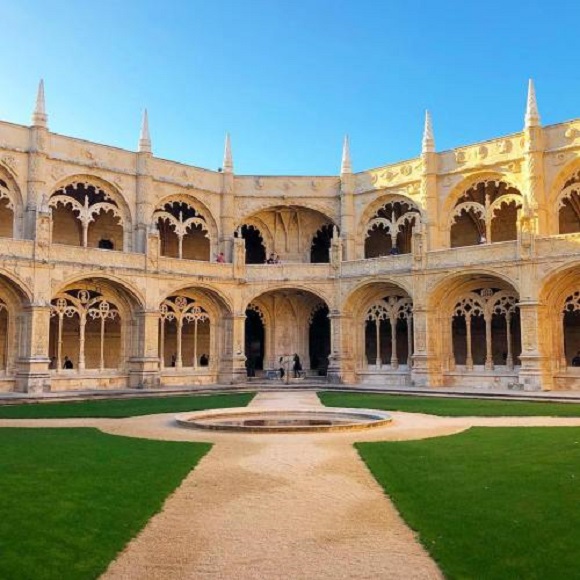
Mosteiro dos Jerónimos
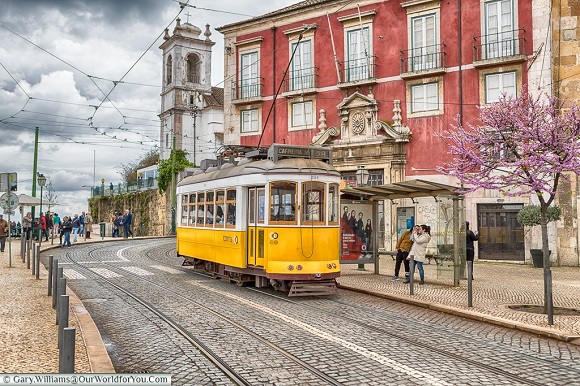
Tour on Tram 28
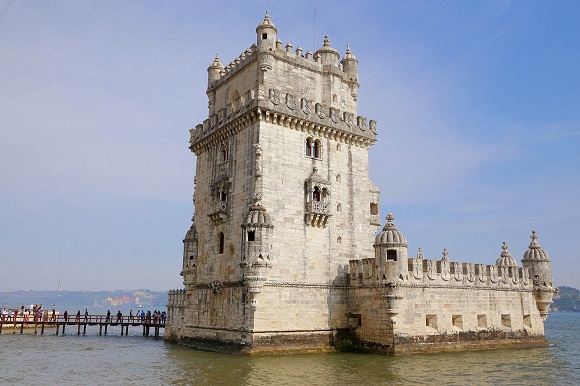
Torre de Belém
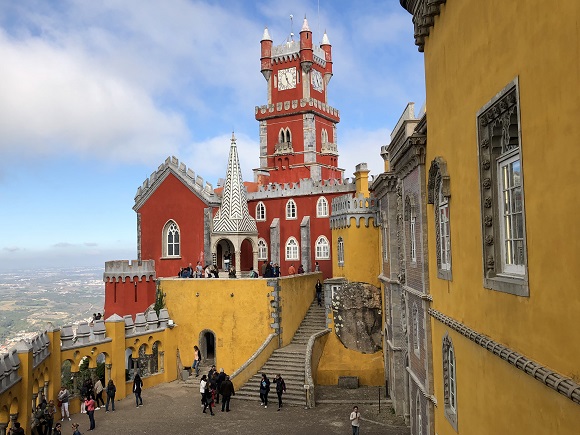
Aristocratic hill town of Sintra
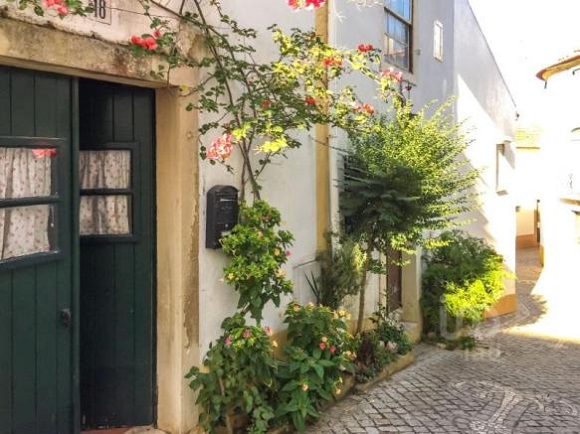
Constância Streets
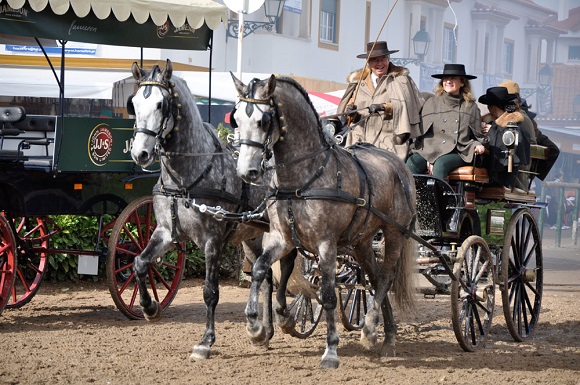
Parading in Golegã
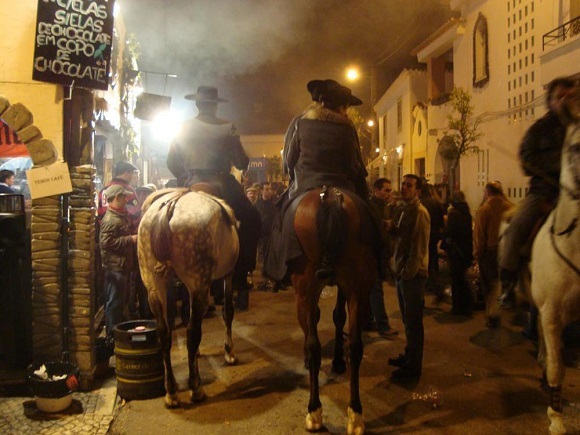
Golegã nightlife during the Feira
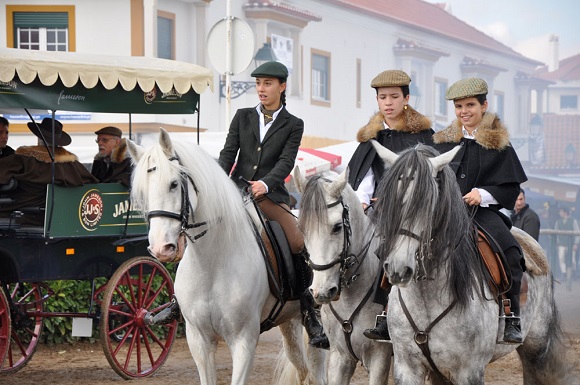
Lusitano horses in Golegã
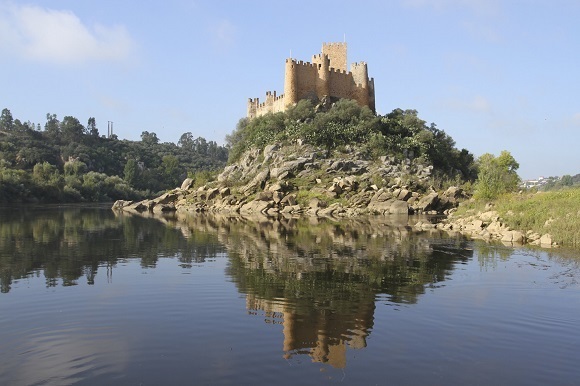
Almourol Castle